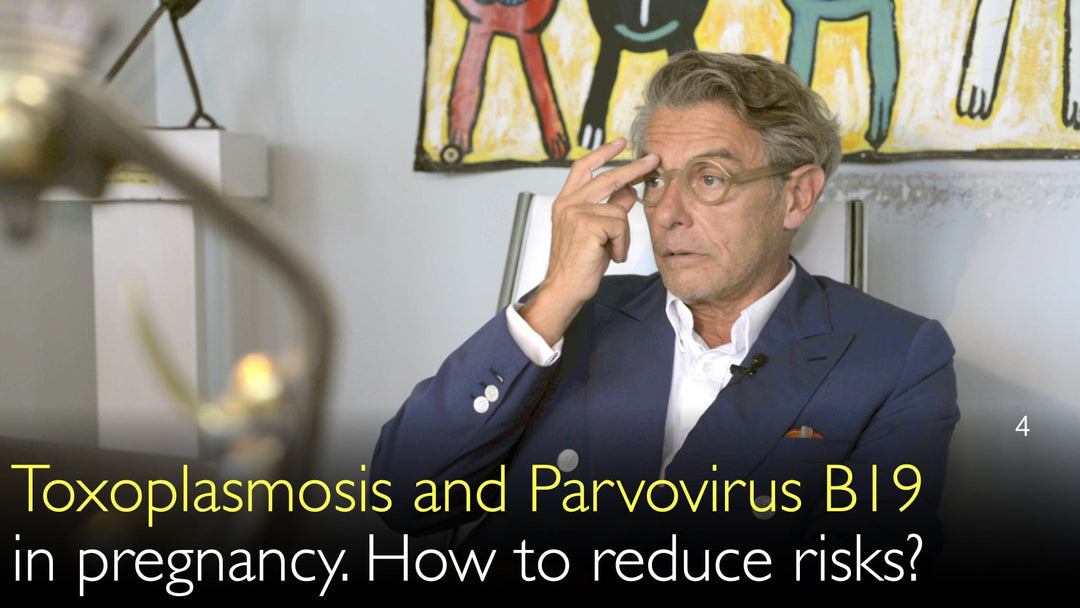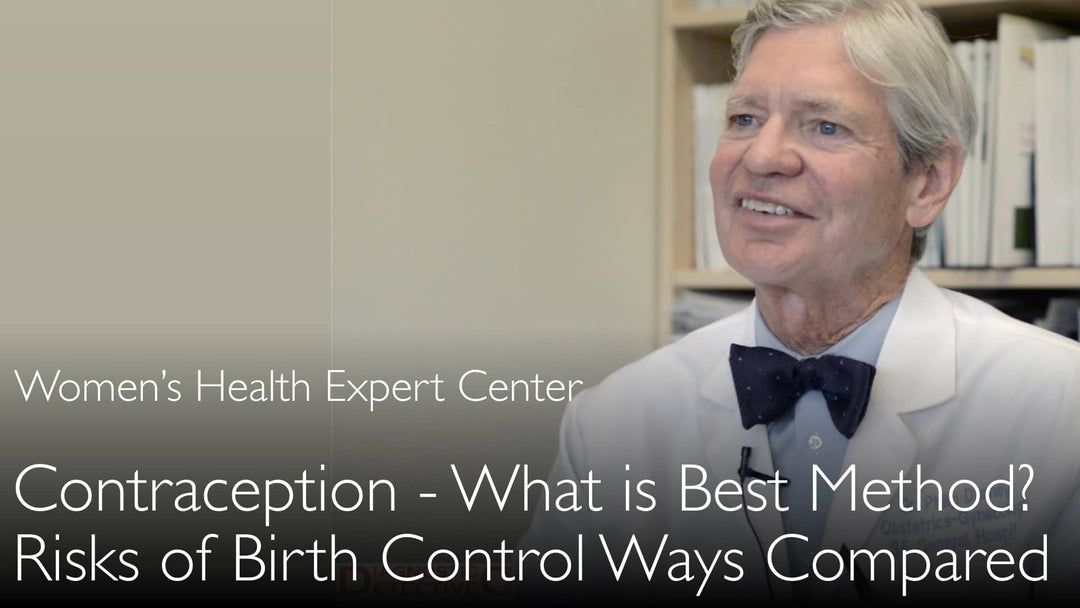Leading expert in maternal-fetal infections, Dr. Yves Ville, MD, explains how to reduce risks from toxoplasmosis and Parvovirus B19 during pregnancy. He details which infections require screening and which need awareness. Dr. Yves Ville, MD, discusses the global prevalence of toxoplasmosis and its transmission through undercooked meat and cat feces. He outlines sophisticated monitoring techniques for infected fetuses, including ultrasound, MRI, and cord blood sampling. Treatment protocols and the importance of early detection are also covered.
Managing Toxoplasmosis and Parvovirus B19 Risks in Pregnancy
Jump To Section
- Screening for Maternal Infections in Pregnancy
- Parvovirus B19 Awareness and Fetal Anemia Risk
- Toxoplasmosis Transmission and Global Prevalence
- Toxoplasmosis Impact and Treatment in Pregnancy
- Advanced Fetal Monitoring Techniques for Infections
- Full Transcript
Screening for Maternal Infections in Pregnancy
Dr. Yves Ville, MD, highlights the established protocols for screening certain maternal infections. He notes that infections like syphilis and hepatitis are screened for universally during pregnancy. Their treatments are well-known and highly effective. However, Dr. Ville points out that other significant infections are not routinely screened for. This gap in prenatal care requires heightened clinical awareness to protect fetal health.
Parvovirus B19 Awareness and Fetal Anemia Risk
Parvovirus B19 represents a critical infection that demands awareness rather than universal screening. Dr. Yves Ville, MD, explains that this virus can cause severe fetal anemia. Pregnant women with young children in daycare settings are at particular risk. Dr. Ville suggests that daycare centers should notify parents of any Parvovirus B19 cases. This allows pregnant women to seek immediate medical evaluation to check for fetal anemia.
Toxoplasmosis Transmission and Global Prevalence
Toxoplasmosis is a parasitic infection discovered in the 1940s. Dr. Yves Ville, MD, describes it as a worldwide concern with varying prevalence. High-risk areas include Brazil and countries around the Mediterranean coast like Greece, Spain, France, and Italy. Transmission is primarily foodborne, involving undercooked meat contaminated with parasite cysts or food spoiled by cat feces. Changing food habits mean fewer women have pre-existing immunity, increasing their susceptibility during pregnancy.
Toxoplasmosis Impact and Treatment in Pregnancy
The impact of a toxoplasmosis infection depends on the gestational timing. Dr. Yves Ville, MD, explains that earlier infection is harder for the parasite to cross the placenta. However, if it does cross early, the potential for severe fetal damage is greater. Treatment for toxoplasmosis in pregnancy involves antibiotics, which Dr. Yves Ville, MD, states are effective in a large proportion of cases. Confirmation of fetal infection is achieved through amniocentesis to isolate the parasite from the amniotic fluid.
Advanced Fetal Monitoring Techniques for Infections
Modern medicine offers sophisticated tools to monitor an infected fetus. Dr. Yves Ville, MD, outlines the comprehensive approach used after diagnosing an infection like toxoplasmosis. This includes serial ultrasound examinations and fetal magnetic resonance imaging (MRI). In some cases, physicians perform cordocentesis to obtain fetal blood from the umbilical cord. This allows analysis of blood counts and direct measurement of the parasite load, enabling precise prognosis and tailored treatment monitoring.
Full Transcript
Dr. Anton Titov, MD: Let's move to the infections. You're certainly a specialist in infections of the mother and unborn child, a fetus. What is the best way to screen for fetal infections? What screenings for maternal infections during pregnancy are maybe not routinely being done today but should be done more widely?
Dr. Yves Ville, MD: There are a few infections that are screened for widely. These are the oldest ones, the oldest established infections like syphilis and hepatitis. This is being screened everywhere, and fine. Treatment is very well known and efficient.
After that, you have some infections that you don't screen for, but you have to be aware that they exist. You have to recognize when the fetus is affected. For example, Parvovirus B-19 causes severe anemia in the fetus. Women with young children in a daycare nursery should be aware of that. Actually, those daycare centers should advertise that they've seen cases in the nursery so that women who have young children and are pregnant could be aware of Parvovirus B-19 risk. They should see a doctor so that we can check that the baby's not anemic.
But there are two infections that are not screened for very widely.
One infection was discovered in the 1940s. It is toxoplasmosis, a parasite actually. Toxoplasmosis is worldwide, but some areas are more prone to this infection than others. Toxoplasmosis is a huge problem in Brazil; the strain of the toxoplasmosis parasite is very aggressive to the fetus. This is a problem in the United States. Historically, one of the pioneers about toxoplasmosis in pregnancy was from America, but I don't think toxoplasmosis is very prevalent anymore because it's a foodborne transmission.
Mainly with food spoiled by oocytes of the parasites that are spread through cats. Toxoplasmosis cysts can be in the meat of lambs, for example, when the meat is not well cooked. If the pregnant woman ingests that contaminated food, then the cyst can be destroyed, and an invasive form of the toxoplasmosis parasite can then cross the placenta.
So toxoplasmosis is dangerous throughout the pregnancy. The advantage is that if the woman had it years ago, when she was a child or before pregnancy, in any case, she cannot get it a second time. Okay, so this one is easy. But fewer and fewer women are immune to toxoplasmosis because our food habits have changed. We eat junk foods or very sterilized food or frozen food; the toxoplasma is not there.
But if you travel to a high-risk area, I mentioned Brazil. You go around the Mediterranean coast everywhere—Greece, Spain, France, Italy. Toxoplasmosis is more widespread, and cats and cattle are usually the sources of the toxoplasmosis infection. Then, because fewer and fewer women are immune, that's a high risk. Toxoplasmosis is a risk for pregnancy.
But for every infection, the earlier you get it in the pregnancy, the more difficult it is to cross the placenta. But if it does cross the placenta, the damage is more than later. Treatment of toxoplasmosis is controversial, but it is likely that the antibiotics that we're using are efficient in a large proportion of cases—not 100%, but a large proportion of cases.
Once you know that the fetus is infected because you've isolated the toxoplasmosis parasite from the amniotic fluid by doing amniocentesis, you can treat toxoplasmosis. You can follow the effects of the toxoplasmosis infection and treatment by serial ultrasound and by fetal magnetic resonance imaging. The ways of assessing fetuses now are very sophisticated.
So the difficulty is to know which fetus needs what. Once you know there is a toxoplasmosis infection, then the prognosis can be made very accurately by combining those techniques. Sometimes you take some blood from the cord and look at fetal blood counts and the amount of toxoplasmosis parasite or viruses in the blood. You can monitor this as you would monitor a neonate or child or an adult.







